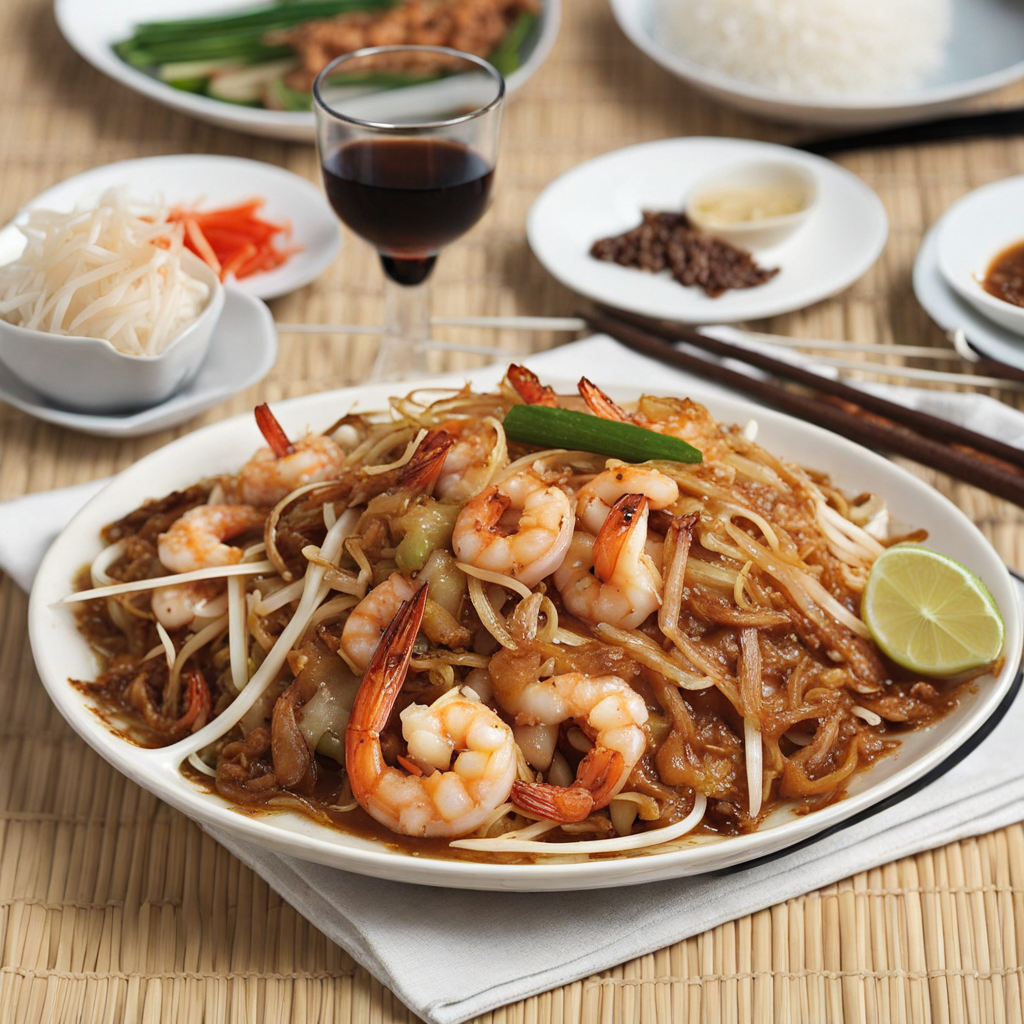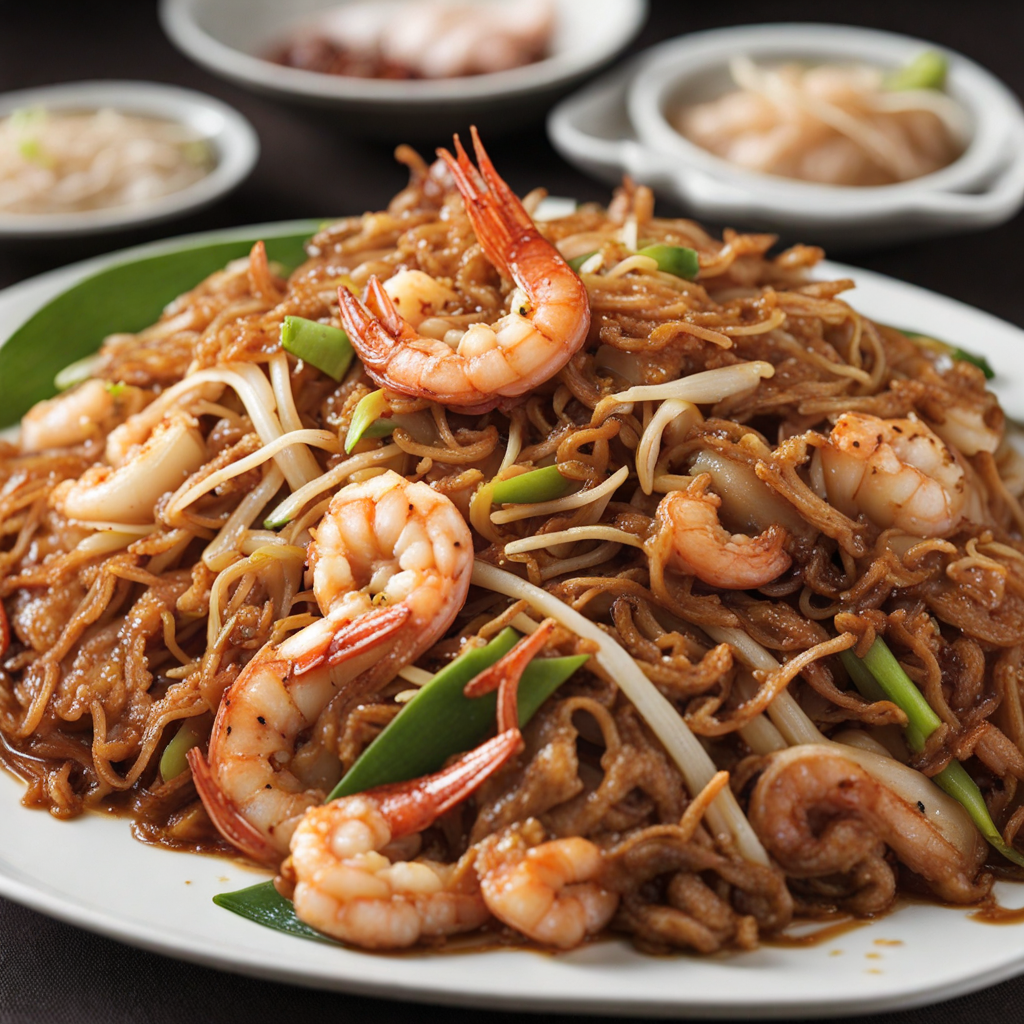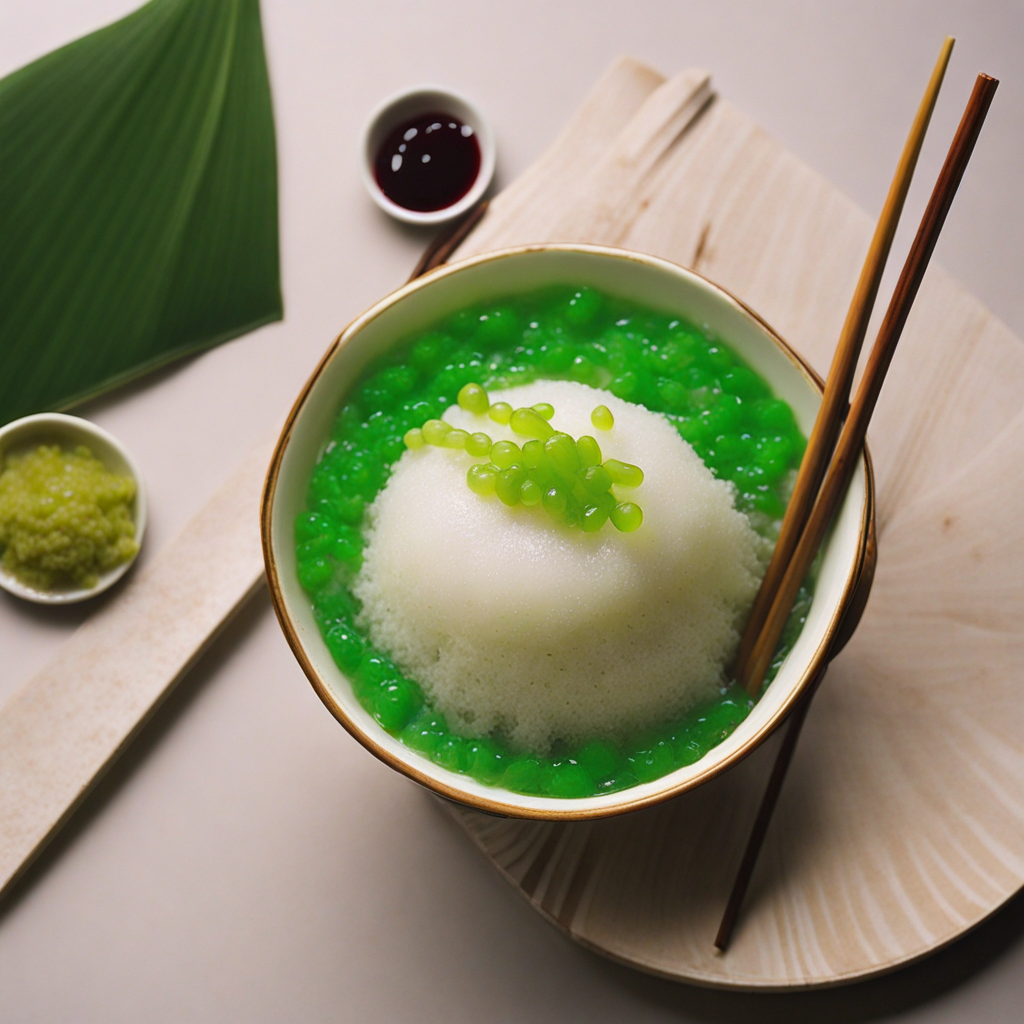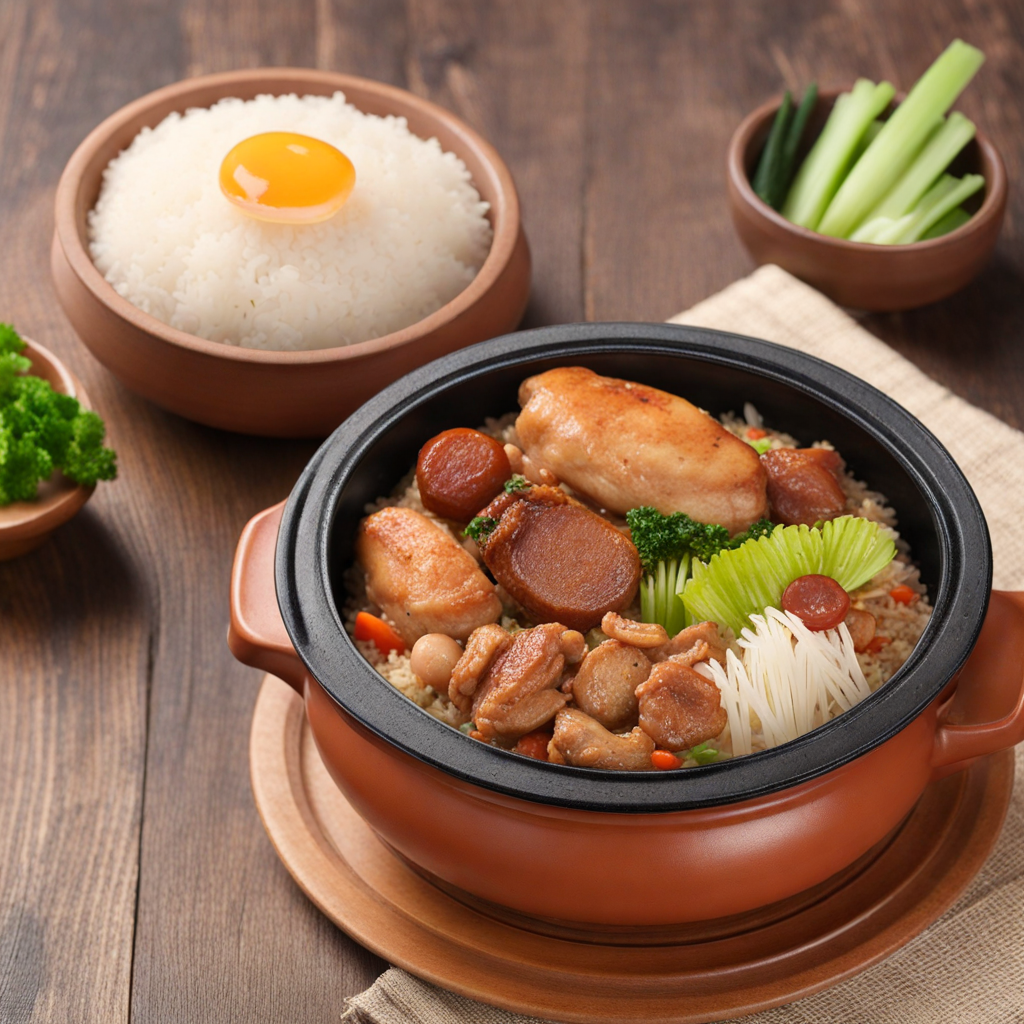Char Kway Teow
Char Kway Teow is a beloved street food dish originating from Singapore, known for its rich flavors and sumptuous textures. At its core, this stir-fried noodle dish features flat rice noodles, which are expertly wok-fried at high heat to create a slightly charred, smoky flavor known as "wok hei." The noodles are typically combined with a medley of ingredients, including juicy prawns, succulent Chinese sausage (lap Cheong), bean sprouts, and eggs, all harmoniously intertwined to create a satisfying and hearty meal. The dish is further elevated by the addition of dark soy sauce, which lends a deep, savory sweetness, and sometimes chili paste for a spicy kick. Each bite offers a delightful contrast of textures—from the tender noodles to the crunch of the bean sprouts—while the umami flavors of the seafood and sausage meld together beautifully. The aroma of the sizzling ingredients wafting through the air adds to the anticipation of enjoying this culinary delight. Char Kway Teow is often enjoyed at hawker centers, where skilled chefs showcase their talent in perfecting this dish. It's not just a meal; it’s an experience that embodies the vibrant food culture of Singapore. Diners can expect a visually appealing plate, often garnished with fresh chives and served piping hot, making it a must-try for anyone looking to explore the diverse and rich flavors of Singaporean cuisine.
How It Became This Dish
The History of Char Kway Teow (炒粿條) in Singapore Origins and Early Influences Char Kway Teow, often referred to simply as “CKT,” is a quintessential dish of Singaporean street food, celebrated for its robust flavors and rich history. The name itself translates to "stir-fried rice cake strips," referring to the flat rice noodles used as the primary ingredient. The origins of this dish can be traced back to the Teochew and Hokkien communities in Southern China, particularly in the Fujian and Guangdong provinces. Rice noodles are an integral part of Chinese cuisine, and their preparation dates back thousands of years. During the 19th century, as Chinese immigrants settled in Southeast Asia, they brought with them their culinary traditions. It was in the bustling port city of Penang, Malaysia, that Char Kway Teow began to evolve, influenced by local ingredients and cooking methods, particularly the use of soy sauce, chili, and seafood. The dish's base, flat rice noodles, are stir-fried with a combination of ingredients such as prawns, cockles, Chinese sausages, bean sprouts, chives, and often an egg, creating a rich, smoky flavor known as "wok hei" or "breath of the wok." The use of dark soy sauce gives Char Kway Teow its signature deep color, while the addition of chili paste adds a spicy kick that makes the dish irresistible to many. Cultural Significance Char Kway Teow is more than just a meal; it is a symbol of cultural convergence in Singapore, reflecting the multicultural tapestry of the nation. The dish is a perfect example of how Chinese culinary practices merged with local ingredients and flavors, creating a unique culinary identity. In Singapore, Char Kway Teow is commonly found in hawker centers—an institution in the country's food scene. The hawker culture itself is a UNESCO-recognized aspect of Singapore’s intangible cultural heritage. The significance of this dish extends beyond its taste; it embodies the spirit of community, where hawker stalls serve as gathering places for friends and families. The affordability and accessibility of Char Kway Teow make it a beloved choice for individuals from all walks of life, further solidifying its role in Singaporean society. Moreover, Char Kway Teow reflects the history of migration and adaptation. As different communities in Singapore interacted over the years, they introduced their culinary traditions, leading to a melting pot of flavors. The evolution of Char Kway Teow showcases how food can serve as a bridge between cultures, bringing people together and fostering a shared sense of identity. Development Over Time The evolution of Char Kway Teow in Singapore can be divided into several phases, each influenced by changing tastes, ingredients, and culinary trends. 1. Traditional Roots: In the early 20th century, Char Kway Teow was primarily sold by Chinese street vendors who utilized simple cooking methods. The dish was straightforward, relying heavily on the quality of the ingredients and the skill of the cook. Prawn and cockles were common additions, and the dish was often cooked over high heat to achieve the desired smokiness. 2. Post-War Era: After World War II, the popularity of Char Kway Teow surged as Singapore experienced rapid urbanization and economic growth. The dish became a staple for workers seeking affordable, hearty meals. During this time, hawker centers began to emerge as central hubs for food, allowing vendors to serve a wider audience. This era also witnessed the rise of the iconic Char Kway Teow stall, where individual chefs developed their unique recipes, each with a personal touch. The competition among hawkers led to an explosion of flavors, with some vendors adding ingredients like shrimp paste or even unique spices to distinguish their dishes. 3. Modern Adaptations: In recent decades, Char Kway Teow has continued to evolve, adapting to contemporary dietary preferences and trends. With the rise of health consciousness, some vendors have started offering variations of the dish that use less oil or substitute traditional ingredients with healthier options. For instance, some stalls now offer Char Kway Teow made with whole grain noodles or incorporate more vegetables, catering to a broader audience, including vegetarians and health-focused consumers. Additionally, the global food scene has influenced Char Kway Teow. The dish has gained popularity beyond Singapore, finding its way into international food festivals and restaurants. Chefs around the world have embraced the concept of wok-frying, and variations of Char Kway Teow can now be found in different forms, often incorporating local ingredients and flavors unique to their regions. 4. Preservation of Tradition: While modern adaptations are prevalent, many hawkers remain committed to preserving the traditional methods of preparing Char Kway Teow. This dedication to authenticity is evident in the use of charcoal stoves, which impart a distinct flavor that cannot be replicated with gas or electric cooking. Some renowned hawkers have even garnered acclaim, winning awards and recognition for their craft, ensuring that the essence of Char Kway Teow is preserved for future generations. Conclusion Char Kway Teow is more than just a dish; it is a testament to Singapore's rich cultural heritage and the evolution of its culinary landscape. It encapsulates the spirit of adaptability and resilience, embodying the stories of the communities that contributed to its development. As Singapore continues to evolve, Char Kway Teow remains a beloved symbol of its diverse food culture, bridging the past and the present while inviting new interpretations. Whether enjoyed at a bustling hawker center or a trendy restaurant, Char Kway Teow will always hold a special place in the hearts and stomachs of those who experience its delightful flavors.
You may like
Discover local flavors from Singapore







